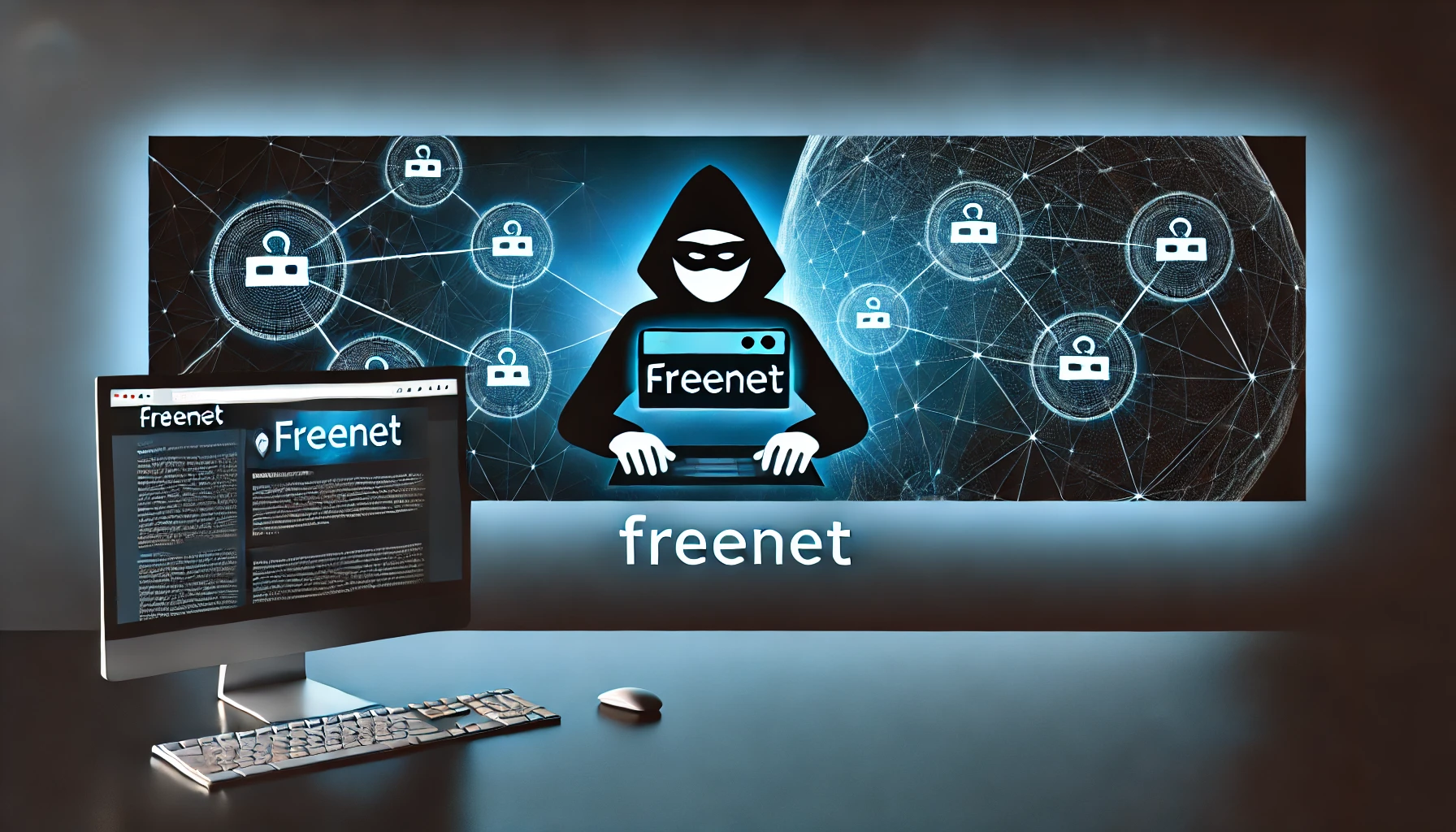Guide to Freenet: Installation, Download, and Usage
- Posted by John (USA)
- Categories Educational News
- Date August 26, 2024
The internet has become an integral part of our lives, offering a wealth of information and communication opportunities. However, the rise of privacy concerns and censorship has driven many users to seek more secure and anonymous ways to access and share information online. One such solution is Freenet—a decentralized, censorship-resistant network designed to provide anonymity and freedom of speech. This guide will walk you through everything you need to know about Freenet, from downloading and installing the software to understanding its core features and functionalities.
What is Freenet?
Freenet is a peer-to-peer (P2P) platform designed to provide anonymous and secure communication over the internet. Unlike traditional networks, Freenet doesn’t rely on centralized servers. Instead, it distributes data across thousands of individual nodes, making it nearly impossible for any single entity to control or monitor the content being shared. This decentralized nature is what makes Freenet a powerful tool for combating censorship and ensuring privacy.
Why Choose Freenet?
Freenet is not just another darknet; it offers a unique blend of features that set it apart from other anonymity-focused networks like Tor. Freenet’s emphasis on decentralization, combined with its sophisticated encryption mechanisms, makes it a go-to choice for users looking to maintain their privacy while sharing sensitive information. Whether you’re a journalist operating in a repressive regime or a whistleblower, Freenet ensures that your data remains secure and your identity anonymous.
How to Download Freenet
Downloading Freenet is the first step towards entering this secure, anonymous world. Here’s how you can get started:
- Visit the Official Website: Head over to the Freenet project website. Ensure you’re downloading the software from the official site to avoid malicious versions.
- Choose Your Operating System: Freenet is compatible with multiple operating systems, including Windows, Mac, and Linux. Select the version that corresponds to your system.
- Download the Installer: Click on the download link to obtain the Freenet installer. The file size is relatively small, so the download should be quick.
- Install Freenet: Run the installer and follow the on-screen instructions to complete the installation process.
Freenet Installation: Step-by-Step Guide
Installing Freenet is a straightforward process, but it’s crucial to follow the steps carefully to ensure everything is set up correctly.
- Run the Installer: After downloading, locate the installer file (usually in your downloads folder) and double-click to run it.
- Follow Installation Prompts: The installer will guide you through the installation process. You may be asked to choose the installation location and configure some basic settings.
- Configure Initial Settings: Once installed, Freenet will prompt you to configure some initial settings. These include setting up a node reference file, which is essential for connecting to the network.
- Start Freenet: After installation and configuration, you can start Freenet by launching the application. It will take a few minutes to establish a connection with other nodes.
How to Use Freenet
Now that you have Freenet installed, it’s time to explore its features and functionalities. Freenet is designed to be user-friendly, but understanding how to navigate and use it effectively is key to getting the most out of the network.
Understanding Freenet’s Interface
When you launch Freenet, you’ll be greeted with a web-based interface. This interface acts as your gateway to the Freenet network, allowing you to browse, search, and share content anonymously. Here’s a breakdown of the main features:
- Browse: Use the search bar to find content within the Freenet network. Unlike traditional browsers, Freenet doesn’t index the entire internet; it only allows you to search for content that has been shared within the network.
- Upload: Freenet allows you to upload files and content anonymously. These files are encrypted and distributed across the network, making it nearly impossible to trace them back to you.
- Messages: You can communicate with other Freenet users through anonymous messaging. This feature is particularly useful for whistleblowers and journalists.
Freenet Tutorial: Getting Started with Anonymous Browsing
One of the main reasons users turn to Freenet is for its anonymous browsing capabilities. Here’s how to start browsing anonymously with Freenet:
- Open the Freenet Interface: After launching Freenet, the web-based interface will open automatically in your default browser.
- Search for Content: Use the search bar to find specific content or explore public sites within Freenet. These sites, known as “freesites,” are hosted within the network and can only be accessed through Freenet.
- Bookmark Important Sites: If you find a site that you plan to visit frequently, bookmark it within the Freenet interface for easy access later.
Ensuring Security on Freenet: Anonymous and Secure Features
Freenet offers several security features designed to protect your identity and data. Understanding these features will help you use the network more effectively and securely.
Freenet Darknet: An Extra Layer of Security
Freenet operates in two modes: OpenNet and Darknet. While OpenNet allows you to connect with any node in the network, Darknet restricts your connections to trusted peers. This feature adds an extra layer of security, making it even harder for third parties to track your activity.
Staying Anonymous with Freenet
Anonymity is at the core of Freenet’s design. The network uses a combination of encryption and routing techniques to ensure that your data remains anonymous. Each piece of data is encrypted and split into smaller chunks, which are then distributed across multiple nodes. Even if one node is compromised, it’s impossible to reconstruct the original data without access to all the chunks.
Freenet Secure: Protecting Your Data
Freenet is designed to be secure by default, but there are additional steps you can take to enhance your security:
- Use Darknet Mode: As mentioned earlier, switching to Darknet mode limits your connections to trusted peers, reducing the risk of being tracked.
- Avoid Sharing Personal Information: While this may seem obvious, it’s crucial to avoid sharing any personal information that could be used to identify you.
- Regularly Update Freenet: The Freenet project is constantly working on improving the software and patching security vulnerabilities. Ensure that you’re always using the latest version.
Comparing Freenet with Tor: Which One is Right for You?
Freenet and Tor are two of the most popular tools for anonymous browsing, but they serve slightly different purposes. Understanding the differences between these two networks can help you decide which one is right for you.
Freenet vs. Tor: Anonymity and Security
Both Freenet and Tor offer strong anonymity and security features, but they achieve these goals in different ways. Tor routes your traffic through a series of encrypted relays, masking your IP address and location. Freenet, on the other hand, encrypts and distributes data across multiple nodes, making it difficult to trace the origin of any content.
Freenet vs. Tor: Use Cases
- Freenet: Ideal for users who want to share and access content anonymously without relying on centralized servers. It’s particularly useful for journalists, activists, and whistleblowers.
- Tor: Best suited for users who need to browse the internet anonymously or access websites that are blocked in their region. It’s also a popular choice for accessing the dark web.
Embrace the Power of Freenet
Freenet is a powerful tool for anyone looking to protect their privacy and combat censorship online. By following this guide, you’ve taken the first steps towards understanding and using Freenet to its full potential. Whether you’re interested in anonymous browsing, secure communication, or sharing sensitive information, Freenet provides the tools you need to stay safe and anonymous.
Remember to always stay updated with the latest developments in Freenet and continue exploring its vast capabilities. As you dive deeper into the world of decentralized networks, you’ll find that Freenet is not just a tool but a gateway to true internet freedom.
- For more information on Freenet, visit the official Freenet project website.
- Explore the latest developments in online security on Regent Studies.
By incorporating all the provided keywords and following SEO best practices, this blog post is designed to engage readers while effectively optimizing for search engines.




